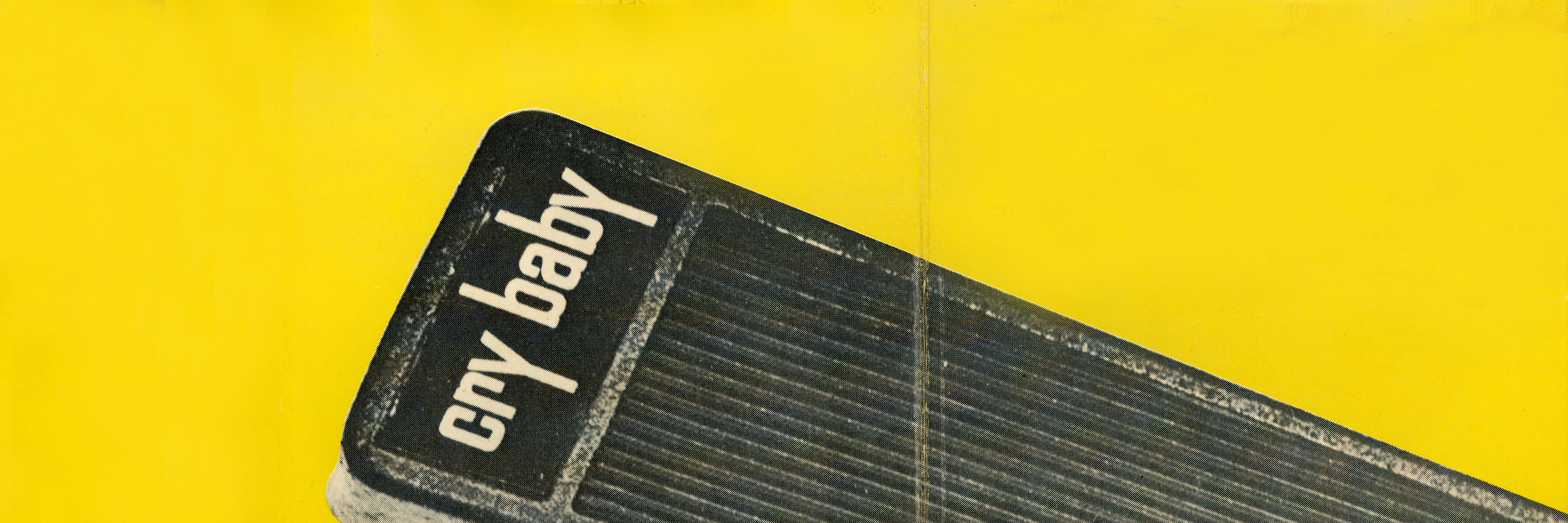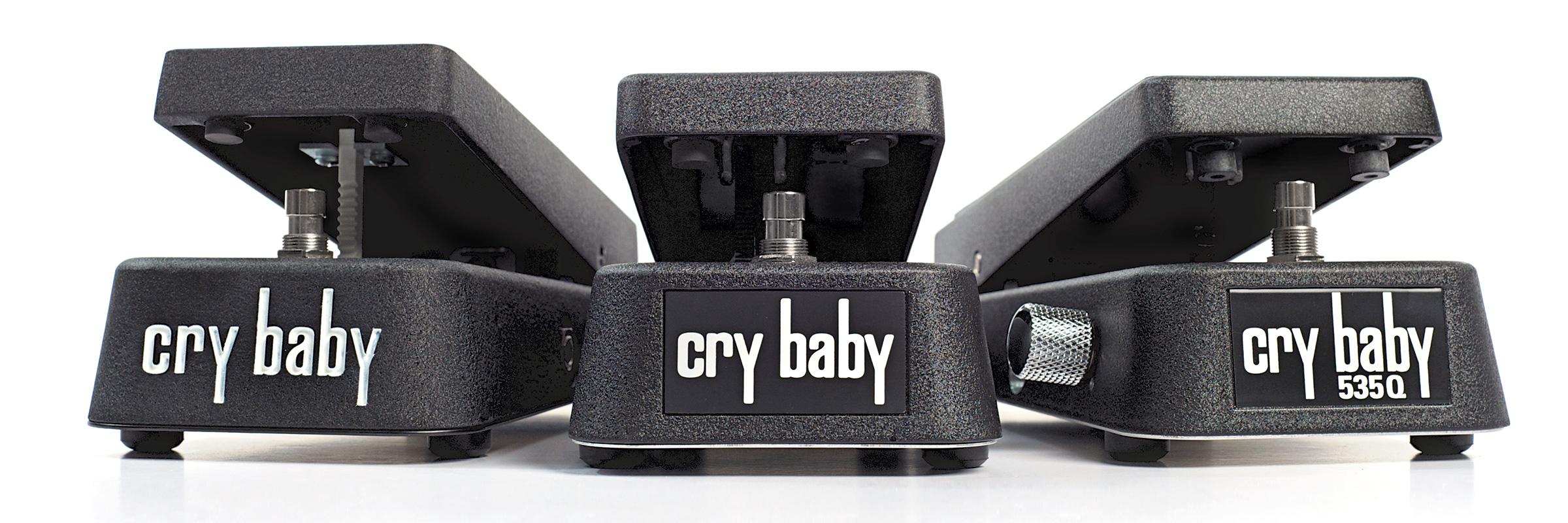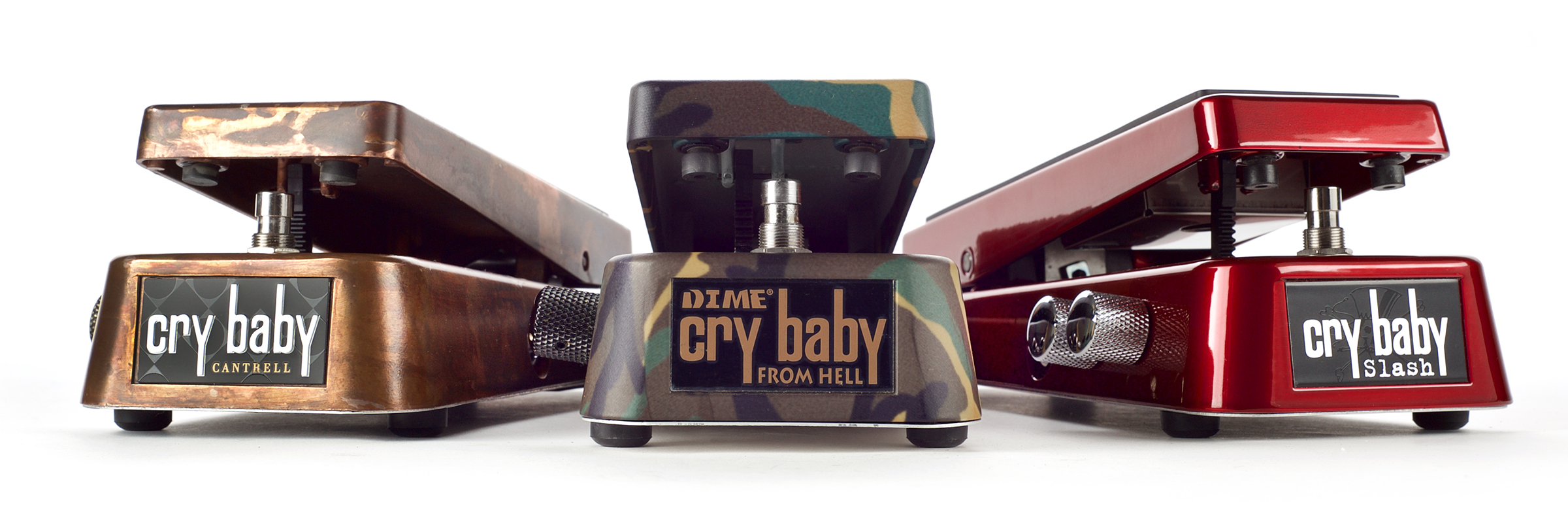Believe it or not, there actually was a time when there was no wah wah. It’s hard to imagine funk, blues, rock, and soul—and guitar music in general—without the vocal, squawky, yow-y sounds that the wah pedal can produce. But it’s true. There wasn’t always wah. Someone had to invent it. Someone did, and things have never been the same. And much like all cola beverages came to be associated with one iconic brand name, the world knows wah wah by the name Cry Baby®. To find out how we got to this funky, expressive, Cry Baby place, however, we need to back up.


Players and fans alike were captivated by the Cry Baby Wah’s expressive sounds, but the original pedals produced by Thomas Organ showed remarkable inconsistency in their components and quality control. This led to significant sonic variations, forcing players like Hendrix to go through six or seven pedals before finding one that sounded right. In 1981, Thomas Organ Company went out of business, and production of the Cry Baby Wah ceased. And that could have been the end of it.
History would prove otherwise, thankfully, as Dunlop acquired and resurrected the Cry Baby brand the following year, ushering the wah wah effect into a whole new era and introducing a level of quality and consistency that never existed before. Dunlop’s engineers carefully scrutinized every component—potentiometers, switches, inductors, and more—and their efforts culminated in the GCB95 Cry Baby® Standard Wah: a high-quality, ultra-reliable wah pedal for a new generation of guitar players.

The innovation didn’t stop there. The Cry Baby line has grown to include a range of unparalleled tonal and functional diversity, from the straightforward plug-in-and-play Jimi Hendrix™ Wah—painstakingly researched and crafted for sonic authenticity—to the super-flexible Cry Baby® 535Q Multi-Wah.
The 535Q was a result of listening to all of the guys I was working with.
Known as the Swiss Army Knife of wah pedals, the 535Q design was based on feedback CEO Jimmy Dunlop received from numerous artists.
“I was doing artist relations at the time,” he says, “and the 535Q was a result of listening to all of the guys I was working with and trying to come out with something that would satisfy them all.” With the 535Q, players can choose from six different frequency ranges, with controls to shape and boost the effect for even greater flexibility.

A recent release brought Dunlop’s commitment to both legacy and innovation full circle with the creation of the Clyde McCoy® Cry Baby® Wah. Inspired by the very first production wah pedal, it synthesizes more than 30 years of Cry Baby engineering to bring modern quality and reliability to the classic Halo inductor sound of the coveted original.
Further enriching the Cry Baby line’s diversity are the signature pedals. These wahs, which are designed to meet the specific gigging and recording needs of the world’s top players, give all guitarists the ability to grab a piece of their favorite artist’s sonic mojo. Guitar legends from Buddy Guy and Joe Bonamassa to Dimebag Darrell and Eddie Van Halen have worked closely with Dunlop to develop their own custom Cry Baby pedals. The most recent addition, the John Petrucci Cry Baby® Wah—designed in conjunction with its masterful namesake—is a modern tone tweaker’s dream come true, combining all the fine-tuning abilities of the Cry Baby Rack Wah into a standard Cry Baby pedal housing.

Dunlop continues to respond to players’ needs with the introduction of the Cry Baby Mini series of pedals. With a housing that’s half the size of a standard Cry Baby pedal—though its full sweep is retained—the Cry Baby® Mini Wah gives guitarists three wahs in one, including the standard GCB95, without sacrificing precious pedalboard space. Likewise, the Cry Baby® Bass Mini Wah packs a ton of toneful expression into the mini housing, while keeping all of the original 105Q’s functionality and low-end thunder. The newest member of the line is the Jimi Hendrix™ Cry Baby® Mini Wah, crafted to deliver the same dynamic tonal sweep of Jimi’s original Italian-made Thomas Organ unit with half the footprint of a standard wah.
When you step on a Cry Baby Wah, you exercise your freedom of expression, loud and clear. The world’s top guitar players, past and present, have relied on it since its inception to sharpen and hone their musical voice and make themselves heard. You’ve got something to say. Say it with a Cry Baby Wah.




